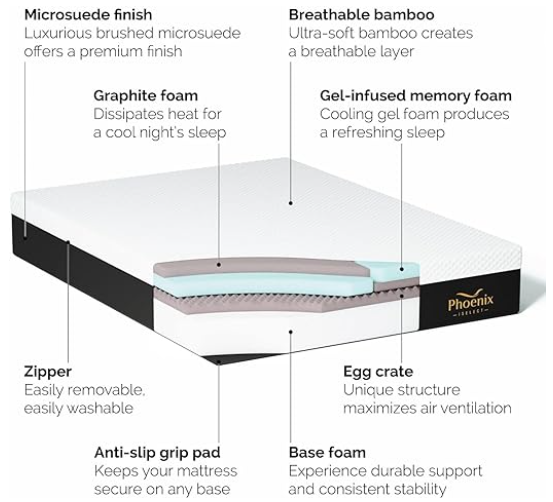Click your Sleep Position to Discover the Right Mattress Types for Your Sleep Style
Sleep is a crucial aspect of human health, essential for physical and mental well-being. The quality of our sleep is significantly influenced by our sleep position, the posture we adopt while drifting off to dreamland. While there is no one-size-fits-all approach to sleep positions, understanding the different types and their associated benefits can help you find the perfect fit for a restful night's sleep.
1. Side Sleeping: A Popular Choice for Comfort and Health
Tap for more info: Mattress Types for Side Sleeping Position
Side sleeping is the most common sleep position, favored by approximately 70% of adults worldwide. This position offers a balance of comfort and support, as it allows the spine to maintain its natural curvature. Side sleeping can also alleviate snoring and sleep apnea, making it a suitable choice for individuals with these conditions.
Variations of Side Sleeping:
- Fetal Position: This curled-up position provides a sense of security and comfort, reminiscent of the fetal stage.
- Log Position: Sleeping on one's side with arms extended straight down offers a more open and relaxed posture.
2. Back Sleeping: Promoting Spinal Alignment and Reducing Back Pain
Tap for more info: Mattress Types for Back Sleeping Position
Back sleeping is another popular choice, preferred by approximately 25% of adults. This position promotes spinal alignment, reducing the risk of back pain. It also helps to open the airways, making it easier to breathe.
Variations of Back Sleeping:
- Soldier Position: Lying straight on the back with arms down at the sides is a traditional and disciplined posture.
- Starfish Position: Sleeping on the back with arms and legs spread out creates a sense of openness and freedom.
3. Stomach Sleeping: A Less Common Position with Potential Drawbacks
Tap for more info:Mattress Types for Stomach Sleeping Position
Stomach sleeping is the least common sleep position, adopted by approximately 10% of adults. While it may provide a sense of security for some individuals, stomach sleeping can strain the neck and back, leading to pain and discomfort. It can also aggravate snoring and sleep apnea.
Factors to Consider When Choosing a Sleep Position:
- Individual Preferences: Ultimately, the best sleep position is the one that feels most comfortable and allows you to fall asleep easily.
- Health Conditions: If you have specific health concerns, such as back pain, snoring, or sleep apnea, consult with your doctor to determine the most appropriate sleep position for you.
- Pregnancy: Pregnant women should avoid sleeping on their backs, as this can restrict blood flow to the uterus and fetus. Side sleeping, particularly on the left side, is generally recommended during pregnancy.
- Mattress Choice: The type of mattress you use can also influence your sleep position. A softer mattress may accommodate stomach sleepers, while a firmer mattress may be better suited for back or side sleepers.
Experimenting with different sleep positions and finding what works best for you can significantly improve your sleep quality and overall well-being. Remember, the key is to find a position that allows you to relax, breathe easily, and maintain proper spinal alignment for a comfortable and restful night's sleep.








